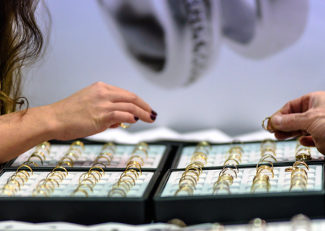Your Dollar’s Last Days
Lost in the noise of the Brexit and U.S. presidential election has been the acceleration of another trend: The looming end of cash. 2016 will mark the first time in modern monetary history that consumers will spend more on debit and credit cards than they spend in cash. This year consumers across the globe will spend $22.6 trillion in cash and $23.2 trillion in credit and debit transactions. Banks are on board too; the European Central Bank recently decided to phase out big bills, with production of the 500 euro note ending in 2018.
Fintech
In the banking industry you’ll hear the term “fintech” tossed around, which is short for financial technology. With more money changing hands via apps, and paper statements becoming less and less common, change is coming faster than ever before. Young people are living their lives on their phones and carrying cash is an unusual thing. With a phone as a link to your bank account, the role of paper bills, even for small transactions, has become secondary in the modern economy.
Most Central Banks Favor Going Cashless
Maintaining a supply of cash in the economy is expensive. New printing technologies have to be constantly invented to stay ahead of counterfeiters and that means regular changes to printing presses, inks and paper. Cash also presents a problem when it comes to monetary policy. With more central banks experimenting with negative interest rates, more banks and consumers are motivated to withdraw their money, in cash, to shield their accounts from interest charges.
Consider the Source
It’s good to remember that the central banks pushing hard for a cashless society are the same ones that have brought us years of near-zero interest rate policies, quantitative easing, helicopter drops and negative interest rates. It’s totally forgivable to think central banks are run by crazy people because, at least from the outside, that’s exactly how it appears.
Always Bet on Convenience
When it comes to technology always bet on convenience. Calling a car with Uber and Lyft is more convenient than hailing a taxi and no cash changes hands unless you tip the driver. Those services will, most likely, mean the eventual end of old-style cabs. The need to carry cash, and the need to go somewhere to get that cash, are less convenient than paying with cards that link to your cash in the bank. Using your phone to make small purchases is even more convenient, so expect mobile payment for small transactions to continue to expand.
The Trend Will be Good for Gold
A cashless world will be good news for gold. As using physical currency becomes more difficult, and banks look on customers using it with increasing suspicion, cash will lose its ability to shield small investors from negative interest rates. Gold and silver will be some of the few liquid assets available to offer some protection from inflation and continued currency devaluation. In what might be a somewhat ironic side effect, cashless transactions will actually make it cheaper, faster and easier to do business with precious metals vendors and convert your liquid hard assets into whatever passes as a medium of exchange at the time.
People who invest regularly in liquid hard assets, including physical gold and silver, shouldn’t fear the decline of paper currency. If you’re already sheltering a percentage of your wealth in high quality gold and silver coins, then you already have a process in place to protect your digital wealth. Debit and credit cards may be the inevitable future of currency, but with a percentage of your wealth in liquid hard assets, the digital future will be a lot less intimidating.

